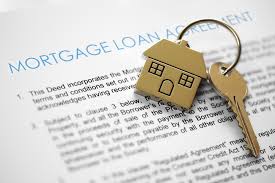Mortgages are essential for many homebuyers, and understanding the various types of mortgages, interest rates, down payment options, and the pre-approval process is crucial for making informed decisions. Here’s an overview:
Types of Mortgages:
- Fixed-Rate Mortgage:
– Interest Rate: The interest rate remains constant throughout the loan term.
– Benefits: Predictable monthly payments, ideal for long-term stability.
– Down Payment: Typically, 20% is recommended, but lower down payment options are available (e.g., 3-5%).
- Adjustable-Rate Mortgage (ARM):
– Interest Rate: The initial interest rate is lower than that of a fixed-rate mortgage but can adjust periodically (e.g., every year).
– Benefits: Lower initial payments, potential for lower rates if interest rates decrease.
– Down Payment: Similar to fixed-rate mortgages.
- FHA Loan (Federal Housing Administration):
– Interest Rate: Typically competitive rates.
– Benefits: Requires a lower down payment (as low as 3.5%), ideal for first-time buyers.
– Down Payment: As low as 3.5% of the home’s purchase price.
- VA Loan (U.S. Department of Veterans Affairs):
– Interest Rate: Competitive rates for eligible veterans and service members.
– Benefits: No down payment required, lower closing costs, and no private mortgage insurance (PMI).
– Down Payment: Typically, none required for eligible borrowers.
- USDA Loan (U.S. Department of Agriculture):
– Interest Rate: Competitive rates.
– Benefits: Designed for rural and suburban homebuyers, offers no down payment and competitive rates.
– Down Payment: Typically, none required for eligible properties and borrowers.
- Jumbo Loan:
– Interest Rate: Rates can vary; typically higher than conforming loans.
– Benefits: Used for higher-priced homes that exceed conforming loan limits.
– Down Payment: Usually requires a higher down payment (e.g., 20% or more).
Interest Rates:
– Interest rates can be fixed (remaining the same over the loan term) or adjustable (changing at specific intervals).
– Rates are influenced by factors like the economy, the Federal Reserve’s actions, and your creditworthiness.
– Higher credit scores often lead to lower interest rates, saving you money over time.
Down Payment Options:
– A down payment is a percentage of the home’s purchase price paid upfront.
– Conventional loans typically require a 20% down payment, but lower options exist (e.g., 3-5%).
– Government-backed loans (FHA, VA, USDA) offer lower down payment requirements.
– A larger down payment can lower your monthly mortgage payments and potentially help you secure a better interest rate.
Getting Pre-Approved:
- Choose a Lender:
– Research and select a reputable mortgage lender or bank.
- Gather Financial Documents:
– Prepare financial documents such as pay stubs, W-2s, bank statements, and tax returns.
- Submit an Application:
– Complete a mortgage application with the lender.
- Credit Check:
– The lender will review your credit history to assess your creditworthiness.
- Provide Documentation:
– Submit the required financial documents to verify your income, assets, and debts.
- Receive Pre-Approval Letter:
– If approved, you’ll receive a pre-approval letter stating the loan amount you qualify for.
Getting pre-approved for a mortgage is a crucial step in the homebuying process. It helps you understand your budget, strengthens your offer when making an offer on a home, and streamlines the final approval process once you’ve found your dream home.
Remember to shop around for mortgage lenders to find the best terms and rates that suit your financial situation and homeownership goals. Consulting with a mortgage professional can provide you with personalized guidance throughout the process.






